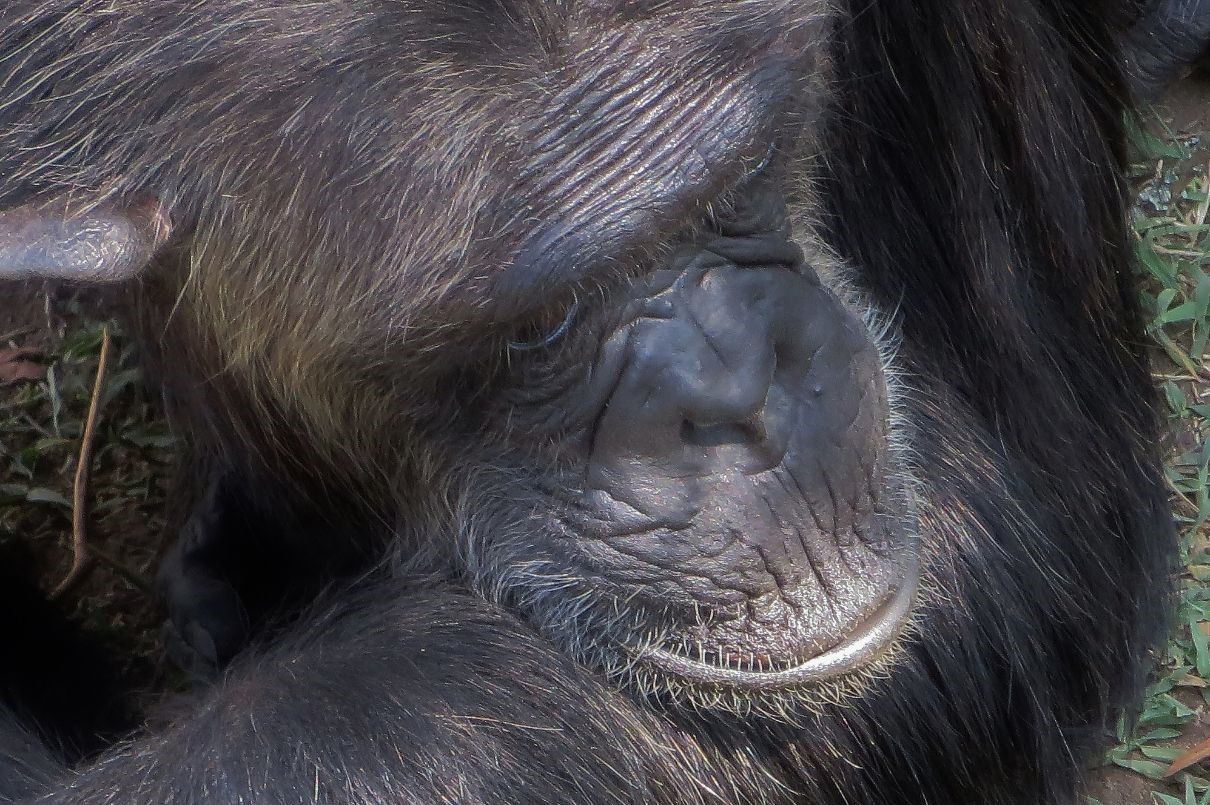
Travis the Chimp was not your average chimpanzee. Raised in a human household, he became a local celebrity in Stamford, Connecticut, known for his friendly demeanor and unique abilities. Travis starred in TV commercials, could dress himself, and even used a computer. However, his story took a tragic turn in 2009 when he attacked a friend of his owner, leading to a nationwide debate on the ethics of keeping wild animals as pets. Travis's life raises questions about animal behavior, human responsibility, and the thin line between domestication and wild instincts. Ready to learn more? Here are 25 facts about Travis the Chimp.
Key Takeaways:
- Travis the Chimp lived a unique life, eating at the dinner table, dressing himself, and even enjoying ice cream like a person. His story highlights the complexities of human-animal interactions.
- The tragic incident involving Travis sparked a nationwide debate about the ownership of exotic animals. It led to legal changes and increased support for sanctuaries providing proper care for wild animals.
Who Was Travis the Chimp?
Travis the Chimp was a well-known animal in the United States, famous for his appearances in commercials and television shows. His life took a tragic turn, leading to a series of events that shocked many.
- Travis was born on October 21, 1995, at a chimpanzee sanctuary in Missouri.
- He was adopted by Sandra and Jerome Herold when he was just three days old.
- Travis became a local celebrity in Stamford, Connecticut, where he lived with the Herolds.
- He appeared in commercials for brands like Coca-Cola and Old Navy.
- Travis also had a role in a television pilot for the show "The Maury Povich Show."
Travis's Unique Lifestyle
Travis lived a life quite different from other chimpanzees. His human-like behaviors and interactions with people made him a fascinating subject.
- Travis was known to eat at the dinner table with the Herolds, using utensils like a human.
- He could dress himself, often wearing clothes similar to what a human child would wear.
- Travis had a favorite snack: ice cream. He enjoyed it just like any other person.
- He was toilet-trained, which is rare for chimpanzees.
- Travis could brush his teeth and even knew how to use a computer.
The Incident That Changed Everything
Despite his seemingly domesticated nature, Travis's wild instincts surfaced in a tragic incident that changed many lives.
- On February 16, 2009, Travis attacked Charla Nash, a friend of Sandra Herold.
- The attack was brutal, leaving Nash with severe injuries to her face and hands.
- Sandra Herold tried to stop Travis by hitting him with a shovel and stabbing him with a knife.
- The police were called, and Travis was shot multiple times before he succumbed to his injuries.
- The incident led to a nationwide debate about the ownership of exotic animals.
Legal and Ethical Implications
The attack raised many questions about the legality and ethics of keeping wild animals as pets.
- After the attack, Charla Nash sued Sandra Herold for $50 million.
- The lawsuit was settled for an undisclosed amount in 2012.
- The incident prompted Connecticut to pass stricter laws regarding the ownership of exotic animals.
- Travis's case influenced the introduction of the Captive Primate Safety Act in Congress.
- The act aimed to prohibit the interstate commerce of primates for the pet trade.
The Aftermath and Legacy
Travis's story didn't end with his death. His legacy continues to impact laws and public perception of exotic pets.
- Charla Nash underwent multiple surgeries, including a face transplant, to recover from her injuries.
- The attack was featured in various documentaries and news programs, raising awareness about the dangers of keeping wild animals as pets.
- Travis's story has been cited in academic papers discussing animal behavior and human-animal relationships.
- The incident led to increased support for sanctuaries that provide proper care for exotic animals.
- Travis's life and tragic end serve as a cautionary tale about the complexities of human-animal interactions.
Final Thoughts on Travis the Chimp
Travis the chimp left a lasting mark on both animal behavior studies and public awareness. His story, filled with moments of joy and tragedy, highlights the complexities of keeping wild animals as pets. Travis's intelligence and human-like behaviors fascinated many, but his unpredictable nature served as a stark reminder of the inherent risks. The 2009 incident that led to severe injuries for Charla Nash and Travis's death brought about significant changes in laws regarding exotic pets. Understanding Travis's life helps us appreciate the delicate balance between human curiosity and animal welfare. His legacy continues to influence discussions on animal rights and the responsibilities of pet ownership. Travis's tale is a powerful example of why respecting the natural instincts of wild animals is crucial for both their well-being and ours.
Frequently Asked Questions
Was this page helpful?
Our commitment to delivering trustworthy and engaging content is at the heart of what we do. Each fact on our site is contributed by real users like you, bringing a wealth of diverse insights and information. To ensure the highest standards of accuracy and reliability, our dedicated editors meticulously review each submission. This process guarantees that the facts we share are not only fascinating but also credible. Trust in our commitment to quality and authenticity as you explore and learn with us.
